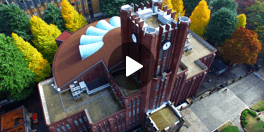March 22, 2024
中島みゆきさん(社会情報学コース博士課程3年・石崎雅人研究室)が「地域社会学会奨励賞(論文部門)」を受賞しました
中島みゆきさん(社会情報学コース博士課程3年・石崎雅人研究室)が「地域社会学会奨励賞(論文部門)」を受賞しました。
【論文タイトル】
災害展示をめぐる合意形成過程―石巻市大川地区の事例から―
(Consensus-Building Process for Disaster Exhibit Creation Preservation of Earthquake Remnants in the Okawa Area of Ishinomaki, Miyagi Prefecture)
【概要】
This study highlights an exhibition opened in July 2021 at the former Okawa Elementary School in Ishinomaki City, Miyagi Prefecture, Japan, to serve as a poignant reminder of the 2011 earthquake and tsunami disaster. The study focuses on the consensus-building process leading to the exhibit creation, including decisions regarding “what to communicate and how” when conveying the essence of the disaster through the damaged building. The interrelationships and interactions of stakeholders that occurred till the summer of 2022 were analyzed, along with the resulting transformations in the local community.
Okawa Elementary School was devastated by the tsunami that resulting in the deaths or disappearances of 74 students and 10 teachers. The families of 23 students filed a lawsuit in 2014, claiming that the local government failed to take appropriate disaster prevention measures. In 2019, the Supreme Court confirmed “organized negligence” by the local government. The disaster also took a toll on the Okawa district, where the school was located, and caused the loss of 418 residents, or 17% of the population. After living in temporary housing for almost 8 years, the residents of 4 villages were relocated 15 kilometers away from the coast. Debates over whether to retain or demolish the school building commenced, and the mayor decided upon its preservation in 2016. Discussions regarding maintaining and using the building as a memorial still continue.
The lawsuit created tension between victims’ families —who desired to display the reality that would influence future school disaster preparedness—and city officials. Meanwhile, residents preoccupied with rebuilding their lives found participation in the discussions difficult. Relocation altered their communal connection and information sharing. Despite these challenges, the families of the victims and other residents collected materials and held exhibits and storytelling events independently. It is necessary to consider the best ways to incorporate diverse viewpoints using voluntarily provided materials and stories into the process of reaching a communal consensus to create engaging exhibits that encourage visitors to reflect deeply on the disaster.
【参照元】
地域社会学会会報238号 (2024.03.21)

